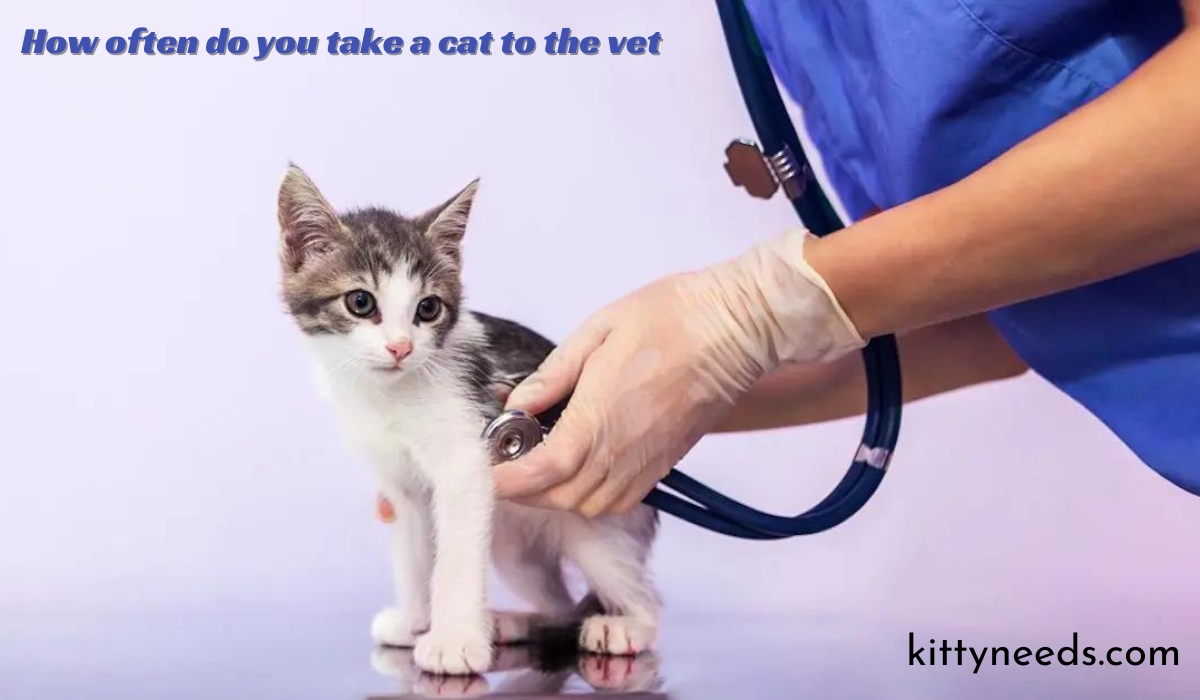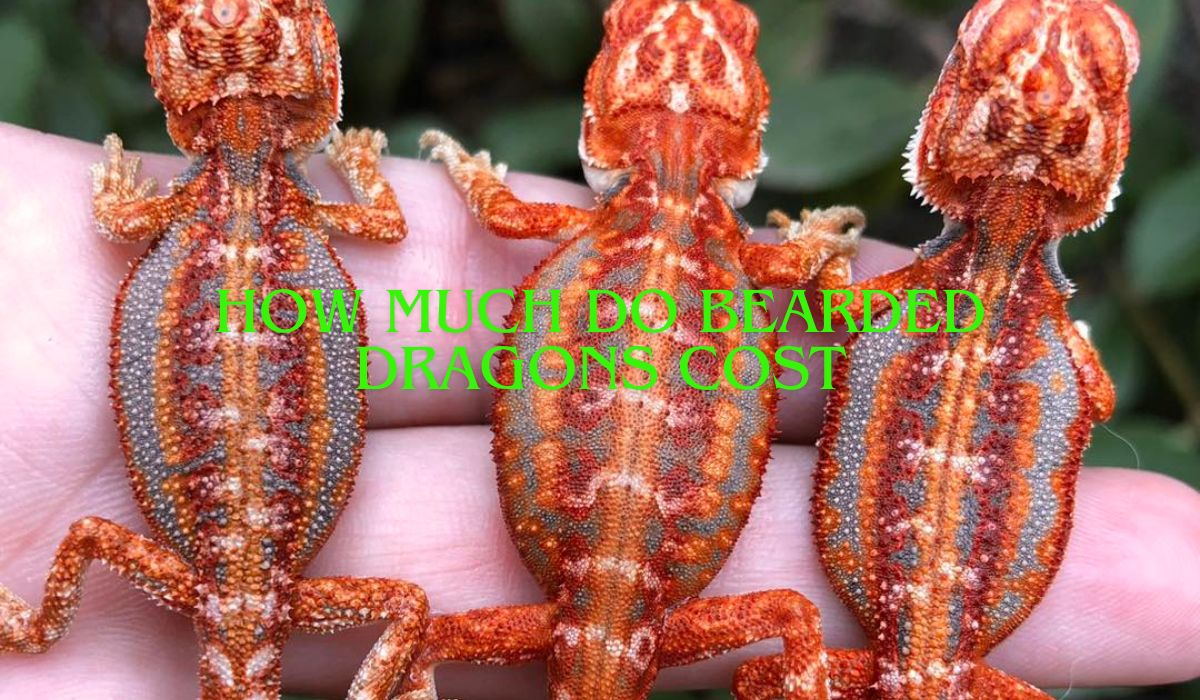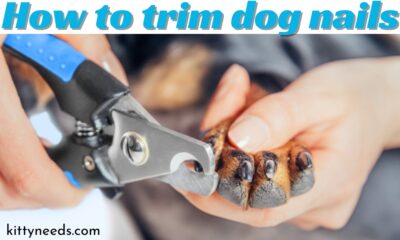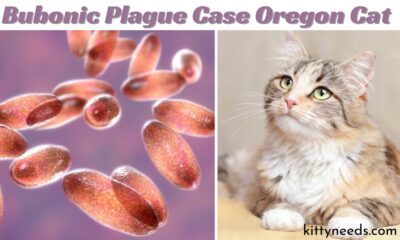Pets and Animals
How Often Do You Take A Cat to the Vet? A Guide for Caring Owners

How Often Do You Take A Cat to the Vet
Cats are known for their independence, but one thing they can’t do without is proper healthcare, and it’s the responsibility of every cat owner to ensure their furry friend is well cared for. Regular visits to the vet are a crucial part of maintaining your cat’s health, but how often is often enough? In this comprehensive guide, we’ll break down the ideal frequency of veterinary visits for cats of all ages and discuss additional factors that might influence that schedule. If you’re a cat owner or looking to become one, understanding these veterinary basics will help you provide the best possible care for your feline friend.
The Importance of Regular Vet Visits for Your Cat
It’s no secret that cats are masters at hiding illness or injury. Instinctively, they mask symptoms of illness, making it difficult for even the most attentive owner to detect early signs of a health problem. Regular veterinary care is essential to catch issues before they become serious, as well as helping your cat live a long, healthy life. During these visits, your vet can administer important vaccinations, conduct full-body checkups, and advise on preventative care. This includes a thorough examination of your cat’s heart, lungs, skin, coat, eyes, and ears, where early signs of diseases can be spotted.
Developing a Strong Bond with Your Vet
When you visit the same vet consistently, you’re not just bringing your cat in for services – you’re developing a relationship. This bond is vital, as your vet will become familiar with your cat’s health history, behaviors, and any unique health concerns. Over time, this will mean more efficient and personalized care for your cat.
How Often Should You Take Your Cat to the Vet (Based on Age)
The frequency of veterinary visits varies throughout a cat’s life. Here, we break it down by life stage.
Kittens (from 6 weeks to 16 weeks)
During the kitten stage, regular vet visits are paramount. Kittens should be seen by a veterinarian at least every three to four weeks up to 16 weeks of age. These visits are needed for several reasons:
Vaccinations
Kittens require a series of vaccinations to protect them against common and potentially fatal diseases, such as feline distemper and respiratory infections. These are typically given every three to four weeks until they are around 16 weeks old.
Parasite Prevention
Your vet will also help you establish a robust parasite prevention plan that may include deworming and flea and tick control. Internal and external parasites can cause significant health issues for kittens.
Checkups and Socialization
In addition to medical care, these visits are opportunities for you to address any behavioral questions, confirm a healthy diet, and start getting your kitten used to being handled and the veterinary environment.
Adult Cats (1 to 7 years old)
Once your cat reaches adulthood, annual vet visits are generally sufficient for healthy cats. This time usually coincides with their annual vaccinations which should be kept up to date for life-threatening diseases like rabies. During these visits, your vet will perform a comprehensive physical exam, administer necessary vaccines, and may recommend diagnostic tests such as blood work, especially for senior cats.
Physical Examinations
A detailed physical examination is crucial for detecting signs of disease, changes in weight, or any unusual bumps or thickenings. Early detection often means more effective treatment.
Establishing a Baseline for Health
Regular checkups help to establish normal macat lual when your cat visit, allowing the vet to better recognize when things are amiss.
Senior Cats (over 7 years old)
Cats are generally considered seniors when they reach 7 years of age. Just as in human seniors, more regular medical attention is important. For senior cats, it’s recommended to visit the vet at least twice a year, or more frequently if your vet advises based on your cat’s health and any potential concerns. Senior cats can develop a variety of ailments more common in older age, such as diabetes, kidney disease, and hyperthyroidism.
Age-Related Concerns
Some breeds and individual cats may show signs of aging earlier than others. It’s during these visits that your vet can look for and address issues like chronic pain, cognitive decline, and more.
Additional Factors Affecting Vet Visit Frequency
While those age-based guidelines are a great starting point, there are additional factors that can and should influence how often you visit the vet with your cat.
Outdoor Cats
Cats that spend time outdoors, or have access to the outdoors, should visit the vet more frequently. Outdoor cats have a higher risk of injury, exposure to diseases, and for ticks and fleas.
Injury and Illness
Outdoor cats are more prone to feline leukemia, feline immunodeficiency virus, and certain cancers. Regular visits are important for monitoring your outdoor cat’s health.
Pre-Existing Health Conditions
If your cat has any chronic health conditions, your vet may recommend more frequent visits to monitor their condition, adjust medications, and provide necessary support.
Quality of Life
Frequent vet visits for cats with health issues can greatly improve their quality and length of life by ensuring their conditions are properly managed and treated.
YOU MAY ALSO LIKE
How To Trim Dog Nails: A Step-by-Step Guide for Painless Pups and Peace of Mind
Conclusion
Regular veterinary care is the keystone of your cat’s health and well-being. By understanding the role that vet visits play at each stage of your cat’s life, and being aware of additional factors that might necessitate more frequent visits, you can ensure your feline friend enjoys the best care possible.
Remember, this guide is just that – a guide. All cats are individuals, and your veterinarian is your best resource for tailoring a healthcare plan to your cat’s specific needs. Don’t hesitate to reach out and schedule that appointment; it’s a decision that shows your love and commitment to your cat’s health.
Frequently Asked Questions (FAQs)
1. How often should kittens go to the vet?
Kittens should visit the vet every three to four weeks up until they are 16 weeks old. These visits allow for vaccinations, parasite prevention, and socialization.
2. Can adult cats just see a vet once a year?
Yes, for adult cats aged 1 to 7 years, an annual vet visit is generally enough for healthy cats. These visits typically include a physical examination, vaccinations, and may involve diagnostic tests.
3. Why do senior cats need to see the vet more often?
Senior cats, defined as over 7 years old, should see the vet at least twice a year. Older cats are more prone to developing conditions like diabetes, kidney disease, and hyperthyroidism, making regular check-ups vital for early detection and management.
4. Should outdoor cats see the vet more frequently?
Yes, outdoor cats are at a higher risk of injuries, exposure to diseases, and pests like ticks and fleas. Thus, they may require more frequent vet visits for monitoring and preventive care.
5. What are signs my cat needs to see a vet immediately?
Immediate veterinary attention is required if your cat is experiencing difficulty breathing, prolonged vomiting or diarrhea, significant lethargy, unexplained weight loss, or any sudden behavioral changes. Always consult your vet when in doubt about your cat’s health.
Pets and Animals
Dogtor Box’s Guide to Keeping Your Dog’s Joints Healthy and Happy

Introduction to Dogtor Box
Welcome to Dogtor Box, where our mission is to enhance pet wellness through veterinarian-formulated products. We understand the vital role pets play in our lives and are dedicated to ensuring they enjoy optimal health and well-being. Our range of joint support soft chews is designed to address the specific needs of dogs, especially those experiencing joint issues. In this blog post, we’ll explore the importance of joint health in dogs, share practical tips for maintaining it, and highlight how Dogtor Box can make a difference.
The Importance of Joint Health in Dogs
Joint health is a key component of a dog’s overall well-being, particularly for aging pets or those with active lifestyles. Healthy joints are essential for mobility, allowing dogs to run, play, and enjoy their daily activities without pain or discomfort. When joint health is compromised, it can significantly impact a dog’s quality of life, leading to decreased activity levels, weight gain, and even depression.
For older dogs, joint health becomes increasingly important as the natural aging process can lead to wear and tear on the joints. Active dogs, such as working breeds or those involved in agility training, also put extra strain on their joints, making it crucial to support them with proper care and nutrition.
By prioritizing joint health, pet owners can ensure their furry companions remain active, happy, and healthy throughout their lives. This is where Dogtor Box comes in, offering veterinarian-formulated solutions to support and maintain optimal joint health.
Understanding Joint Health Issues in Dogs
Joint health issues are common in dogs, with conditions like arthritis and hip dysplasia affecting many pets. These conditions can cause significant pain and discomfort, limiting a dog’s ability to move freely and enjoy their favorite activities.
Arthritis is one of the most prevalent joint issues in dogs, particularly in older pets. It occurs when the cartilage that cushions the joints wears down, leading to inflammation and pain. Symptoms of arthritis in dogs include stiffness, limping, and reluctance to move or climb stairs.
Hip dysplasia is another common condition, especially in larger breeds. It is a genetic disorder where the hip joint doesn’t fit properly into the hip socket, causing pain and leading to arthritis over time. Dogs with hip dysplasia may show signs of lameness, decreased range of motion, and difficulty rising from a lying position.
Understanding these conditions and their symptoms is crucial for early detection and intervention. Regular veterinary check-ups and monitoring your dog’s behavior can help identify joint issues before they become severe, allowing for timely treatment and management.
The Role of Nutrition and Supplements in Supporting Joint Health
Nutrition plays a significant role in maintaining joint health in dogs. A balanced diet that provides essential nutrients supports overall health and can help prevent or manage joint issues. Incorporating natural supplements, such as joint support soft chews, can further enhance a dog’s joint health.
Glucosamine and chondroitin are two key ingredients commonly found in joint supplements. Glucosamine helps rebuild cartilage, while chondroitin prevents the breakdown of cartilage and promotes water retention in the joints, improving their function and reducing pain.
Omega-3 fatty acids, found in fish oil, have anti-inflammatory properties that can help reduce joint inflammation and pain. Adding these supplements to your dog’s diet can improve their joint health and overall well-being.
Dogtor Box’s joint support soft chews are formulated with these essential ingredients, providing a convenient and effective way to support your dog’s joint health. Our chews are not only beneficial but also delicious, making it easy for your dog to enjoy their daily dose of joint support.
Vet-Approved Tips for Maintaining Optimal Joint Health
Maintaining your dog’s joint health requires a proactive approach, combining proper nutrition, regular exercise, and routine veterinary care. Here are some vet-approved tips to help you keep your dog’s joints healthy and functional:
Exercise:
Regular exercise is important for maintaining joint health, but it’s vital to choose the right type and amount of activity for your dog. Low-impact exercises like walking, swimming, and gentle play can help keep your dog’s joints flexible and strong without causing excessive strain. Avoid high-impact activities that can worsen joint issues, especially if your dog is already experiencing joint pain.
Weight Management:
Keeping your dog at a healthy weight is crucial for joint health. Excess weight puts additional strain on the joints, exacerbating existing issues and increasing the risk of developing new ones. Monitor your dog’s diet and ensure they receive appropriate portions and a balanced diet to maintain a healthy weight.
Regular Check-Ups:
Routine veterinary check-ups are essential for early detection and management of joint issues. Your veterinarian can assess your dog’s joint health, recommend appropriate treatments or supplements, and provide guidance on maintaining their overall well-being. Regular check-ups allow for timely intervention, preventing minor issues from becoming major problems.
By following these tips and incorporating Dogtor Box’s joint support soft chews into your dog’s routine, you can help maintain their joint health and ensure they stay active and happy.
Dogtor Box’s Approach to Pet Wellness
At Dogtor Box, we are committed to providing high-quality, veterinarian-formulated products that support your pet’s health and well-being. Our joint support soft chews are designed to address the specific needs of dogs with joint issues, offering a convenient and effective solution to maintain their joint health.
Our products are developed in collaboration with veterinarians, ensuring they meet the highest standards of quality and efficacy. We use only the finest ingredients, carefully selected for their proven benefits in supporting joint health. Each batch of our chews undergoes rigorous testing to ensure they are safe, effective, and delicious.
In addition to our products, Dogtor Box offers exceptional customer support, guiding pet owners in choosing the right products and providing expert advice on maintaining their pet’s health. We are dedicated to building a community of pet owners who share our commitment to proactive pet care and wellness.
Success Stories and Testimonials
Don’t just take our word for it—hear from pet owners who have seen the benefits of Dogtor Box’s joint support chews firsthand:
Bella’s Story:
Bella, a 10-year-old Labrador, struggled with arthritis, making it difficult for her to enjoy her daily walks. After incorporating Dogtor Box’s joint support chews into her routine, Bella’s owner noticed a significant improvement in her mobility and energy levels. Today, Bella is back to her playful self, enjoying her walks and living her best life.
Max’s Testimonial:
Max, a 7-year-old German Shepherd, was diagnosed with hip dysplasia. His owner started him on Dogtor Box’s joint support chews, and within weeks, Max showed remarkable progress. He was more active, had less pain, and could move more freely. Max’s owner credits Dogtor Box for helping Max maintain his quality of life and stay active.
These success stories highlight the positive impact of Dogtor Box’s joint support chews on dogs’ lives. Our veterinarian-formulated products can make a real difference, improving your dog’s joint health and overall well-being.
Why Choose Dogtor Box for Your Dog’s Joint Health
When it comes to your dog’s health, choosing the right products is essential. Dogtor Box stands out for several reasons:
Vet-Formulated:
Our products are developed in collaboration with veterinarians, ensuring they meet the highest standards of quality and efficacy. You can trust that our joint support chews are safe and effective for your dog.
High-Quality Ingredients:
We use only the finest ingredients, carefully selected for their proven benefits in supporting joint health. Our chews are free from artificial additives, ensuring your dog gets the best possible care.
Convenience and Taste:
Our joint support chews are not only beneficial but also delicious. Dogs love the taste, making it easy to incorporate them into their daily routine. The chews are also convenient and mess-free, making them a hassle-free addition to your dog’s diet.
Conclusion – Prioritizing Your Dog’s Joint Health
Proactive pet care is essential for maintaining your dog’s joint health and overall well-being. By understanding the importance of joint health, recognizing common issues, and taking steps to support your dog’s joints, you can ensure they live a happy and active life.
Dogtor Box’s joint support soft chews offer a convenient and effective solution for maintaining your dog’s joint health. With veterinarian-formulated products, high-quality ingredients, and a commitment to pet wellness, Dogtor Box is your trusted partner in caring for your furry companion.
Take the Next Step for Your Dog’s Health
Ready to prioritize your dog’s joint health? Explore Dogtor Box’s range of veterinarian-formulated products and discover how our joint support chews can benefit your pet. Join our community of pet owners committed to proactive care and give your dog the gift of optimal joint health. Visit our website and get started today
Pets and Animals
Dive into Adventure: Exploring Miami Seaquarium – Florida’s Premier Aquarium

Introduction:
Nestled in the heart of sunny Miami, Florida, lies an aquatic wonderland like no other – the Miami Seaquarium. Boasting a rich tapestry of marine life, interactive exhibits, and conservation initiatives, the Seaquarium stands as a beacon of education, entertainment, and family fun. Join us as we embark on an unforgettable journey through the depths of this aquatic paradise.
Discover the Dolphins:
Interactive Encounters Step into the world of these intelligent and playful creatures with Miami Seaquarium’s renowned dolphin interactions. From up-close encounters to exhilarating dolphin shows, visitors have the opportunity to forge connections with these magnificent mammals like never before. Imagine the thrill of swimming alongside them or witnessing their acrobatic feats firsthand. It’s an experience that promises to leave a lasting impression on visitors of all ages.
Marine Conservation:
Protecting Our Oceanic Heritage At Miami Seaquarium, conservation isn’t just a mission – it’s a way of life. Dive into the depths of marine preservation efforts and discover the vital role each of us plays in safeguarding our oceanic ecosystems. Engage in educational programs, participate in conservation initiatives, and gain insights into the importance of preserving marine biodiversity for future generations. It’s a chance to make a difference while experiencing the wonders of the underwater world.
Family Entertainment:
Fun for All Ages Looking for the perfect family outing? Look no further than Miami Seaquarium. With a diverse range of attractions and activities, there’s something for everyone to enjoy. From thrilling animal encounters to exciting exhibits and shows, the Seaquarium offers endless opportunities for family fun and adventure. Create lifelong memories as you explore the wonders of the sea together.
Engaging Content Ideas:
- Dive into Discovery: Explore interactive exhibits showcasing a diverse array of marine life, including sharks, sea turtles, and tropical fish.
- Behind-the-Scenes Tours: Go behind the scenes for a glimpse into the inner workings of Miami Seaquarium, from animal care to conservation efforts.
- Educational Workshops: Engage in hands-on workshops and educational sessions designed to inspire a love for marine life and conservation.
- Animal Encounters: Get up close and personal with your favorite marine animals through special encounters and feeding experiences.
- Conservation Talks: Attend informative talks and presentations led by marine biologists and conservationists, shedding light on pressing issues facing our oceans today.
Conclusion:
Miami Seaquarium stands as a beacon of marine conservation, family entertainment, and educational enrichment. With its unparalleled array of attractions and activities, it offers visitors a chance to dive deeper into the wonders of the sea while fostering a deeper appreciation for our oceanic heritage. Whether you’re seeking adventure, education, or simply a day of family fun, the Seaquarium promises an experience like no other. Come explore, discover, and make memories that will last a lifetime.
Pets and Animals
How Much Do Bearded Dragons Cost? Your Comprehensive Guide

Introduction:
Bearded dragons are fascinating reptiles that have gained popularity as pets due to their docile nature and unique appearance. If you’re considering adding one of these scaly companions to your family, one of the first questions you may have is, “How much do bearded dragons cost?” In this comprehensive guide, we’ll delve into all the factors that contribute to the cost of owning a bearded dragon, from initial setup expenses to long-term care costs.
Chapter 1: Initial Purchase Price
When it comes to buying a bearded dragon, the cost can vary depending on factors such as age, morph, and where you purchase them from. Here’s a breakdown of what you can expect to pay:
- Hatchlings: Baby bearded dragons, or hatchlings, are typically the least expensive option, ranging from $20 to $100. However, keep in mind that younger dragons may require more specialized care.
- Juveniles: Juvenile bearded dragons, between 2 to 4 months old, may cost between $50 to $200, depending on their size and coloration.
- Adults: Adult bearded dragons, over a year old, can range from $100 to $500 or more, with factors such as gender, size, and color influencing the price.
- Morphs: Bearded dragons come in a variety of morphs, which are variations in color and pattern. Rare or high-demand morphs can fetch prices upwards of $1,000 or more.
Chapter 2: Habitat Setup Costs
Creating the perfect habitat for your bearded dragon is essential for their health and well-being. Here’s what you’ll need to consider in terms of setup costs:
- Enclosure: A suitable enclosure for a bearded dragon can range from $50 for a basic tank to $500 or more for a custom-built vivarium.
- Heating and Lighting: Proper heating and lighting are crucial for maintaining the right temperature and providing UVB exposure. Expect to spend around $50 to $200 on heat lamps, UVB bulbs, and fixtures.
- Substrate and Decor: Substrate, such as reptile carpet or tile, and decor items like rocks, branches, and hides, can add another $20 to $100 to your setup costs.
- Thermometers and Hygrometers: Accurate temperature and humidity monitoring are essential. Plan to spend around $20 to $50 on quality thermometers and hygrometers.
Chapter 3: Ongoing Care Expenses
Once you’ve set up your bearded dragon’s habitat, there are ongoing expenses to consider for their care and maintenance:
- Food: Bearded dragons require a varied diet consisting of live insects, fruits, and vegetables. Depending on the size of your dragon and the quality of the food, expect to spend around $20 to $50 per month on food.
- Veterinary Care: Routine veterinary check-ups and potential medical expenses should be factored into your budget. While the cost can vary, budgeting around $100 to $300 per year for vet expenses is a good starting point.
- Substrate Replacement: Substrate will need to be replaced regularly to maintain cleanliness and hygiene in your dragon’s enclosure. Budget around $20 to $50 per month for substrate replacement.
- Supplements: Calcium and vitamin supplements are essential for bearded dragons’ health. Plan to spend around $10 to $20 per month on supplements.
Chapter 4: Additional Expenses
In addition to the essential costs mentioned above, there are other potential expenses to consider:
- Enclosure Upgrades: As your bearded dragon grows, you may need to upgrade their enclosure to accommodate their size. Budget for potential enclosure upgrades down the line.
- Accessories: Additional accessories such as basking platforms, climbing structures, and enrichment toys can enhance your dragon’s habitat but will add to your expenses.
- Travel Costs: If you need to travel with your bearded dragon or board them while you’re away, factor in these additional expenses.
- You may also like: Revealing the Enigma of Ovestæ: Delving into the Secrets Behind This Intriguing Locale
Conclusion
While the initial cost of purchasing a bearded dragon may vary depending on factors such as age and morph, it’s essential to consider the ongoing expenses associated with their care and maintenance. By budgeting for both the upfront and long-term costs, you can ensure that you provide your scaly friend with the best possible care without breaking the bank. So, if you’re ready to embark on the journey of owning a bearded dragon, remember to plan ahead and budget accordingly for a rewarding and fulfilling experience.
FAQS
- How much does a bearded dragon cost?
- The cost of a bearded dragon can vary depending on factors such as age, morph, and where you purchase them from. Hatchlings may range from $20 to $100, juveniles from $50 to $200, and adults from $100 to $500 or more. Rare morphs can fetch prices upwards of $1,000.
- What is the average setup cost for a bearded dragon habitat?
- The average setup cost for a bearded dragon habitat includes the enclosure, heating and lighting equipment, substrate, decor, and monitoring tools. Expect to spend between $200 to $800 or more depending on the size and complexity of the setup.
- How much do bearded dragon owners spend on food monthly?
- Bearded dragon owners typically spend around $20 to $50 per month on food for their pets. This includes live insects, fruits, and vegetables to provide a balanced diet for their reptile companions.
- What are the ongoing care expenses for bearded dragons?
- Ongoing care expenses for bearded dragons include food, veterinary care, substrate replacement, and supplements. Budgeting around $100 to $300 per year for vet expenses and $20 to $50 per month for food and substrate replacement is recommended.
- Are there any additional expenses associated with owning a bearded dragon?
- Yes, there can be additional expenses associated with owning a bearded dragon. These may include enclosure upgrades as the dragon grows, purchasing accessories such as basking platforms and enrichment toys, and potential travel costs if you need to transport or board your pet.
-

 Pets and Animals4 months ago
Pets and Animals4 months agoShovel Dog: Everything You Need to Know
-

 Pets and Animals4 months ago
Pets and Animals4 months agoHow To Trim Dog Nails: A Step-by-Step Guide for Painless Pups and Peace of Mind
-

 Pets and Animals4 months ago
Pets and Animals4 months agoBlack Beauty: Unveiling the Alluring Pitbull Dog Black
-

 Pets and Animals4 months ago
Pets and Animals4 months agoBubonic Plague case oregon cat: A Modern Tale of Medieval Disease
-

 Pet Care Guides4 months ago
Pet Care Guides4 months agoHere’s Why Nationwide Pet Insurance Should Be on Your Radar
-

 Pet Care Guides4 months ago
Pet Care Guides4 months agoGive a Loving Home: Adopt a Pet, Change a Life with Pet finder
-

 Other4 months ago
Other4 months agoHow to Hello kitty drawing: A Step-by-Step Guide for Fans of All Ages
-

 Pets and Animals4 months ago
Pets and Animals4 months agoWhat is Qxefv? A Complete Guide to Caring for Your Exotic Companion
